"Even just a little knowledge can make a book into a physically impressive object."
Time is of the essence. A worthy exhibition still has a week to run: Apocalypse Then: Medieval Illuminations from the Morgan
to June 17, 2007. In this exhibition, the Book of Revelations, in all of its complexity, is seen through the eyes of some of the greatest medieval illuminators. Drawn entirely from the Morgan's renowned collections, the show celebrates the completion of a facsimile of the Morgan's Las Huelgas Apocalypse
What drew my attention to this, quite late, is Dirk Deppey's link to a post by blogger, 'Eve': Tuesday, June 5: AGE OF APOCALYPSE: The temporal panel and the infinite page: "I had a really hard time, at first, figuring out how to approach these pages. They seemed flat, static. One of the other patrons felt the same way: I heard him telling a friend that he couldn't really get into these pictures at all. We didn't understand how they worked. But somewhere around the third glass case, I got it. These were comics."
What you really need to look at is the famous Morgan Bible (or 'Crusader's Bible', or 'Maciejowski Bible') from the same collection (Pierpont Morgan Library, New York, Ms M. 638). It tells the story of the bible entirely in pictures, some 280 of them, with some rudimentary 'captions' for the sake of keeping it comprehensible. In fact, scholars believe the captions are mostly late additions: "The Morgan Bible also evoked text in a more complex sense. The visual conventions described above probably do not draw upon phylogenetically late capabilities of the human brain. Properly trained monkeys probably could sense these visual conventions, while most humans would not consciously notice them without a reason for doing so. However, about the mid-fourteenth century, the owner of the Morgan Bible sensed the need to add text. Latin text was added above and below the pages’ painted areas." That's from a long academic essay on the book by Douglas Gailbi. If you want to know what the monkeys have got to do with it you'll have to go there. My title above is his opening line.
It tells the story of the bible entirely in pictures, some 280 of them, with some rudimentary 'captions' for the sake of keeping it comprehensible. In fact, scholars believe the captions are mostly late additions: "The Morgan Bible also evoked text in a more complex sense. The visual conventions described above probably do not draw upon phylogenetically late capabilities of the human brain. Properly trained monkeys probably could sense these visual conventions, while most humans would not consciously notice them without a reason for doing so. However, about the mid-fourteenth century, the owner of the Morgan Bible sensed the need to add text. Latin text was added above and below the pages’ painted areas." That's from a long academic essay on the book by Douglas Gailbi. If you want to know what the monkeys have got to do with it you'll have to go there. My title above is his opening line.
Unlike so many medieval texts, we can look at it without being wealthy. It's all here at medievaltymes.com though the way it's all broken up doesn't excite me. This site gives a more expedient sampling. The battle scenes are magnificent, as in the gory sample above. Taschen's Codices Illustres by Walther /Wolf shows it as a colossal and glorious 'double page spread' to continue in the shrunken spirit of seeing the universe in comic book terms. (There's another battle scene at the Wikipedia article).
The authors note that "scholars believe that the miniaturists (of the Morgan Bible) might have been among the masters who worked on the wall paintings and stained glass of Saint Chapelle in Paris, the palace chapel which was consecrated in 1248." This last named has also been claimed as and by 'comics' in this age of lowbrow cultural colonialism. Try to put that out of your mind when you visit the chapel, as you one day must if you haven't already. It is small as far as gothic architecture goes, but it is the most spiritually exciting place I have have ever stood in, with the sun melting down through all that blue and purple glass.  That's it on the cover of Konemann's The Art of Gothic, and here's a beautiful flickr set of pictures.
That's it on the cover of Konemann's The Art of Gothic, and here's a beautiful flickr set of pictures.
But apart from that, apparently all tose tiny images in the windows form a complex narrative system. I googled around for a close up. There's one here, five pictures down.
********
I've been chatting to Steve Bissette for a piece he wants to run on his blog, talking mostly about a nineteenth century favourite cartoonist of mine, Richard Doyle. As a teenager he kept an illustrated diary and I've just found a recent post about it with some excerpted pages. Doyle has a lot in common with some of the quiet introverted cartooning of our own alt-comics milieu.
******
A Guardian review, jun 2, of Nick Cave: The Complete Lyrics, published by Penguin
Dark matter Nick Cave's brooding lyrics mark him out not only as a poet of the Australian outback, but as one of the greatest writers on love of our times, argues Will Self
Cave's mise en scène is as particular to his Australian patrimony as the whorls are to his fingers, or his lexicon is to his idiolect. Here, in rural Victoria, the light is harsher, the flies' legs are moister and the blood takes longer to coagulate. A persistent atmosphere of the uncanny pervades the world the songster summons up. While immersed in a Cave lyric, it's easy to believe not only in full temporal simultaneity - the indigenes are hacked to death, even as a football is kicked across the oval - but also that this sepia land marches with ancient Israel itself, both the Pharisees and the Kelly Gang having been clamped by the neck for the time necessary to secure a group portrait.
(link from Michael Evans)
*********
Reviews of the Black Diamond Detective Agency at:
Chris Sims
Geeks of Doom
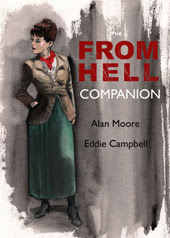


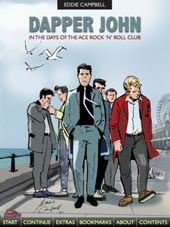
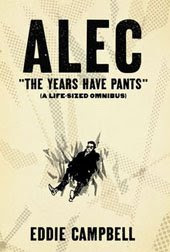
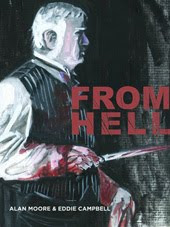
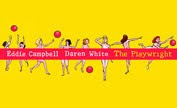
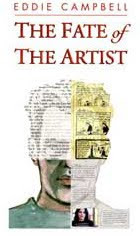
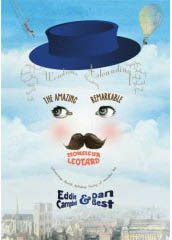





2 Comments:
It's always interesting to see each society's interpretation of the Bible myths.
Hey,
You should check out the writings of Meyer Schapiro on Medieval texts, for a modernist approach to storytelling and comics. I remember it from that hazy past of art school teaching me more then I had ever thought about storytelling and comics. His comment on faces drawn frontally addressing the viewer versus three quarter views engaging the other actors in the painting in later work is oneof the techniques you see in Kirby comics all the time.
Mark Badger
Post a Comment
Subscribe to Post Comments [Atom]
<< Home